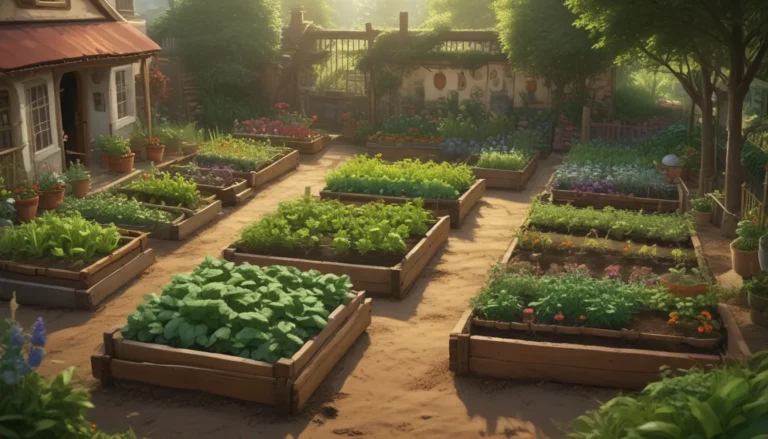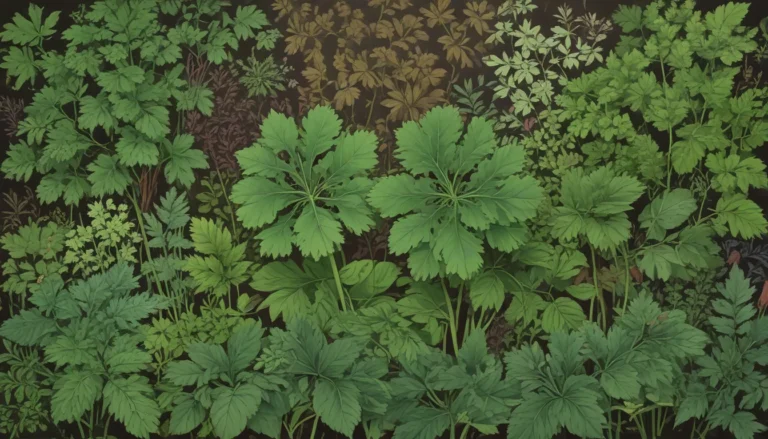The Complete Guide to Growing and Caring for Pineapple Sage

Discovering the Aromatic Pineapple Sage
One of the aromatic stars of the summer garden, pineapple sage brings a burst of color and fragrance to any landscape. This elegant plant not only attracts pollinators and beneficial insects with its vibrant red blooms but also offers a delightful sensory experience with its tropical-fruit scented foliage.
If you enjoy cultivating your own herbs for culinary creations or herbal teas, pineapple sage’s mouth-watering aroma will be a pleasant addition to your garden. While it may seem too good to be true, this beautiful plant is also easy to grow, making it a must-have for any herb garden.
Understanding Pineapple Sage
Characteristics:
– Pineapple sage, scientifically known as Salvia elegans, is an herbaceous, semi-woody plant with fantastic spikes of red blooms.
– It can grow as a small shrub, tender herbaceous perennial, or annual, reaching three to five feet tall and spreading three to four feet wide.
– The leaves are elliptical to triangle-shaped, pale green, and emit a pineapple fragrance when rubbed. The herb’s red flowers are tubular and lipped, borne on long spikes.
Identification:
– Pineapple sage may resemble similar species like S. splendens, also known as scarlet sage. However, the distinctive fragrance of pineapple sage sets it apart.
– It’s essential to distinguish pineapple sage from non-edible salvias like S. coccinea, which may look similar but lack the delightful fragrance.
History:
– Native to Mexico and Guatemala, pineapple sage belongs to the mint family (Lamiaceae) and has been cultivated since the 1800s.
– The herb’s scientific name, Salvia elegans, reflects its elegant appearance and fine qualities.
Propagating Pineapple Sage
Propagation Methods:
– Pineapple sage can be propagated from cuttings, division, or seeds.
– Cuttings are the preferred method due to the difficulty of sourcing seeds. Cuttings can be taken in spring or summer for best results.
From Cuttings:
– Prepare nursery pots with well-draining soil, take cuttings from a mature plant, and root them with or without rooting hormone.
– Provide the cuttings with adequate moisture, warmth, and indirect light until they develop roots and can be transferred to larger pots.
From Division:
– Division is suitable for perennial pineapple sage plants that require more space. It’s best done in spring or fall once the plants have matured.
From Transplants:
– Once you have rooted specimens, choose whether to plant them in the ground or in containers based on your climate and gardening space.
Growing Pineapple Sage
Cultivation Guidelines:
– Pineapple sage thrives in full sun but can tolerate part sun with light afternoon shade.
– The soil should be rich in organic matter, well-drained, with a pH range between 6.0 and 8.0.
– Regular watering is essential, especially during dry periods, to ensure optimal growth.
Growing Tips:
– Plant in full or partial sun with well-drained, organic-rich soil for best results.
– Regular water during dry spells to maintain moderate soil moisture levels.
Maintaining Pineapple Sage
Pruning and Care:
– Pineapple sage is low-maintenance and benefits from mulching to retain moisture and regulate soil temperature.
– Pruning can help promote bushier growth and encourage multiple blooming periods in long growing seasons.
Mulching and Fertilizing:
– Mulch around plants and fertilize with compost twice a year for perennial specimens.
– Overwinter container-grown plants indoors with sufficient sunlight exposure and regular care.
Cultivars to Explore:
– Consider unique cultivars like ‘Elk Sonoran Red,’ ‘Frieda Dixon,’ ‘Golden Delicious,’ ‘Honey Melon,’ and ‘Tangerine’ for diverse colors and fragrances in your garden.
Managing Pests and Diseases
Pest and Disease Resistance:
– Pineapple sage is relatively pest and disease-resistant, deterring deer and rabbits while attracting beneficial insects.
– Insect pests like aphids and spider mites can be problematic in greenhouse settings, while diseases like leaf spot are uncommon in outdoor cultivation.
Best Uses for Pineapple Sage
Garden Applications:
– Pineapple sage is an excellent choice for attracting pollinators and beneficial insects in organic gardens.
– Its red blooms appeal to hummingbirds, making it a perfect addition to butterfly and fragrant gardens.
Versatile Applications:
– Use pineapple sage in mixed borders, cottage gardens, and fall landscapes for color and texture.
– Include pineapple sage in herbal teas, salads, baked goods, cheese spreads, and savory dishes for a tropical twist.
Quick Reference Guide to Growing Pineapple Sage
- Plant Type: Semi-woody subshrub or tender herbaceous perennial
- Native to: Guatemala, Mexico
- Hardiness (USDA Zones): 8-10
- Bloom Time/Season: Summer, fall
- Exposure: Full sun, part shade
- Height: 1-5 feet
- Spread: 1-4 feet
- Water Needs: Moderate
- Common Pests and Disease: Aphids, mealybugs, spider mites, whiteflies; leaf spot
Cultivating the Elegant Pineapple Sage
Enjoy the sensory delights of growing pineapple sage in your garden and explore its culinary and medicinal uses. With its vibrant blooms, tropical fragrance, and easy-care nature, this aromatic herb is a versatile addition to any landscape.
Share your experiences with pineapple sage and your favorite recipes or garden designs in the comments below. As you master the art of growing Salvia elegans, continue your journey into the world of salvias with our comprehensive guides. Happy gardening!





